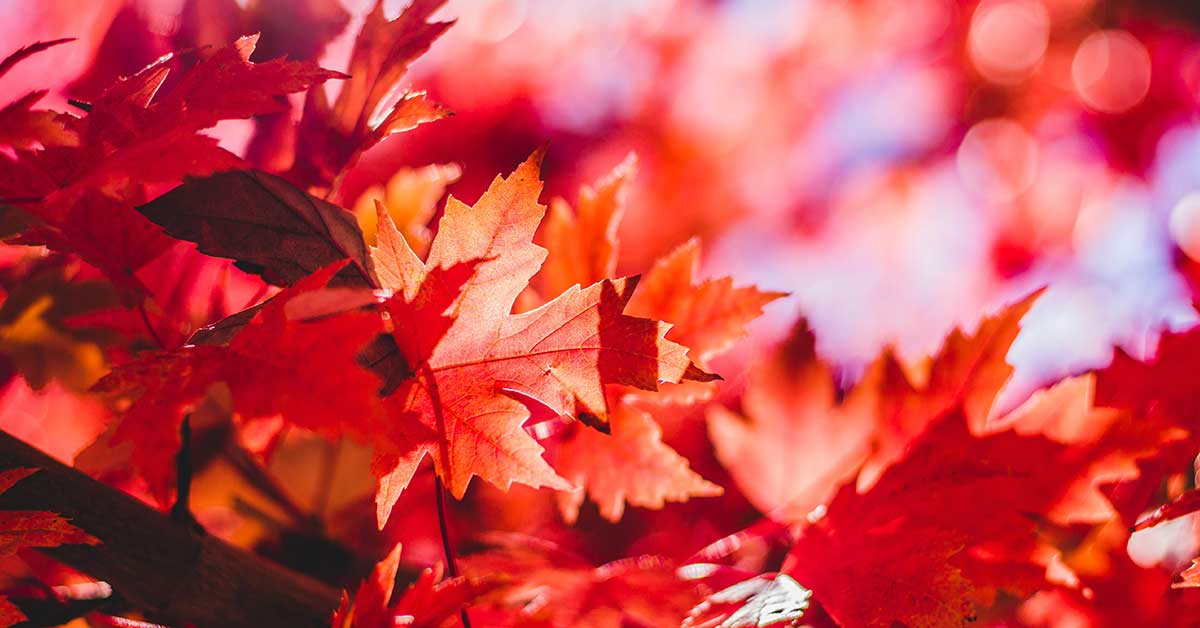When I plant a deciduous tree, there’s one thing I always have to know: what do its autumn leaves look like? The truth is, fall is my favorite time of year. I absolutely love the explosion of color, the fall crops that I harvest, and watching the leaves fall gently from the trees. One of the more common fall leaf colors is red, and there are a number of trees that will produce red fall leaves.
Trees that have red fall leaves
The following is a list of 9 deciduous trees that have stunning red fall leaves. If red leaves are what you’re about, don’t miss out on planting these trees!
Northern Red oak
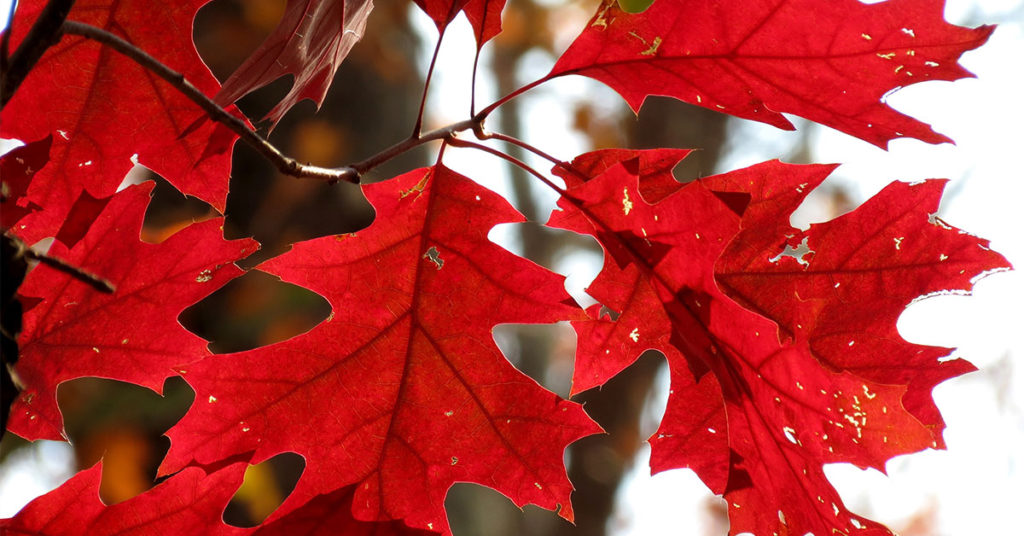
The red oak barely makes this list as its deep, mahogany, almost wine-colored leaves make it border on more of a purple than a red, but I wanted to put it right at the top of the list because it’s a little bit different. That and oak trees are among my favorite types of trees. Some fast facts about the red oak tree:
- Latin name: Quercus rubra
- Other names: Northern red oak, common red oak, eastern red oak, mountain red oak, and gray oak.
- Native to: Eastern and central United States and southeast and south-central Canada
- Hardiness zone: 3-8
- Tree height: 75 feet
Red oaks are a tall tree native to eastern and central North America, including Canada and the United States. It can be grown in hardiness zones 3 through eight and grows to a large 75 feet tall. This is a great tree to plant if you love rich, deep, red fall leaves.
White oak
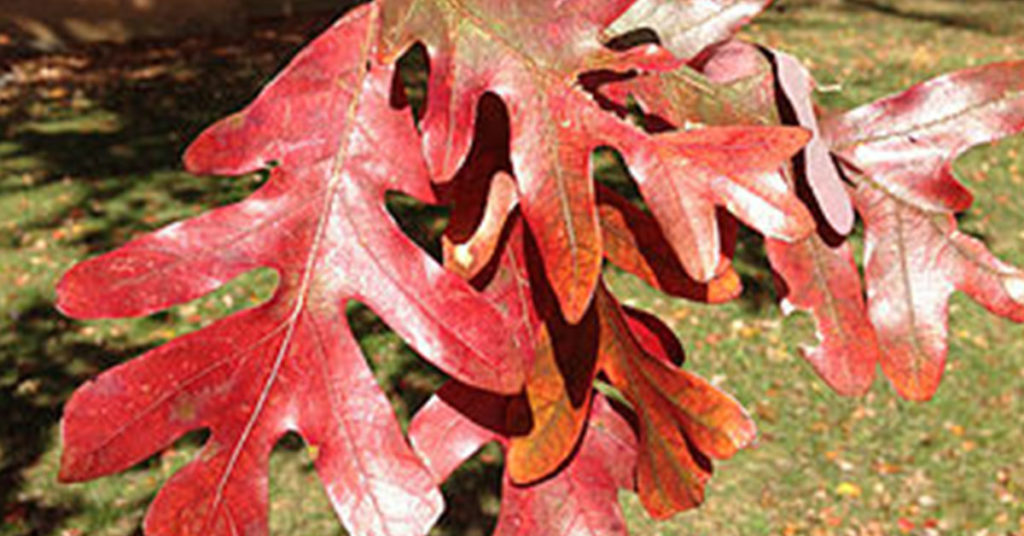
White oak trees, unlike their red oak counterparts, have more of a traditional red fall leaf. The white oak’s leaves turn red during fall, but because the tree can sometimes hang onto its old leaves until spring, the color does fade to be more of a dingy brown. Some fast facts about the white oak tree:
- Latin name: Quercus alba
- Other names: Stave oak
- Native to: The Pacific Northwest
- Hardiness zone: 6
- Tree height: 80 feet
White oaks have a more narrow range than red oaks, living only in the Pacific Northwest. They can be found growing in British Columbia, Washington State, and Oregon. These tall trees can be found growing only in hardiness zone 6 and are a favorite tree due to being somewhat fire-resistant. Red oak trees are less likely to burn during a forest fire.
Black oak
The black oak is a behemoth of a tree that erupts in delightful red leaves during the fall. It is a close relative to California Black Oak (Quercus kelloggii) which can be found in the western United States. Some fast facts about the black oak tree:
- Latin name: Quercus velutina
- Other names: Eastern black oak
- Native to: Eastern and central North America
- Hardiness zone: 3-9
- Tree height: 150 feet
Black oak trees are massive trees, growing as tall as 150 feet tall. That’s like stacking one and a half blue whales nose to tail! They grow across a large swath of Eastern and Central North America and are hardy in zones 3 through nine. Their red fall leaves are a favorite among oak tree lovers!
Black cherry
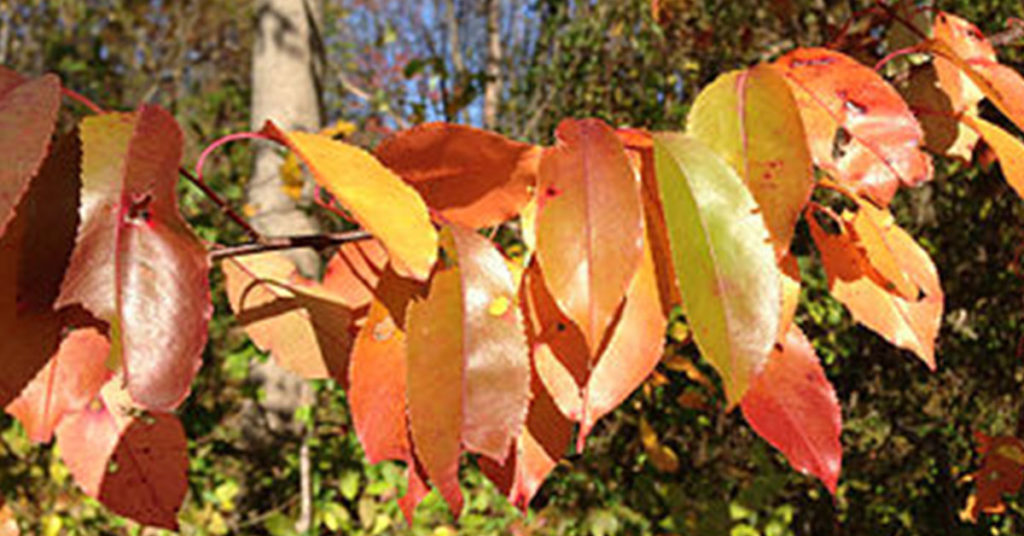
Black cherry trees are another favorite tree among those who love red fall leaves, but they can also excite people who love orange leaves as well. There can be a bit of variation in the fall foliage of the black cherry tree, from a lighter orange to a deep, rich red. Some fast facts about the black cherry tree:
- Latin name: Prunus serotina
- Other names: Wild black cherry, rum cherry, and mountain black cherry
- Native to: North America and South America
- Hardiness zone: 3-9
- Tree height: 80 feet
The black cherry is a large fruiting cherry tree related to the chokecherry that can be found growing in North and South America. It also goes by the names wild black cherry, rum cherry, and mountain black cherry. It is hardy to zones 3 through 9 and can grow to a stately 80 feet tall.
Flowering dogwood
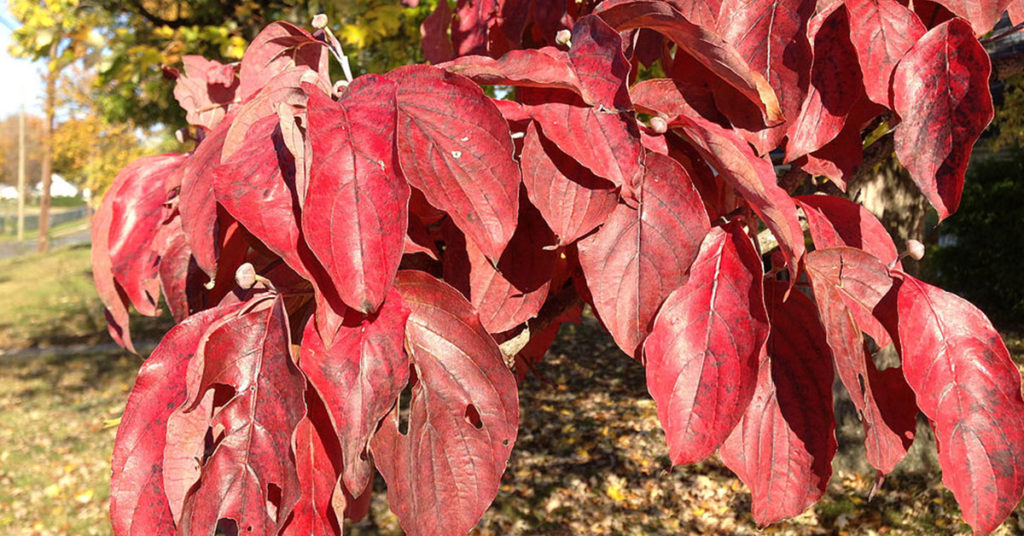
The flowering dogwood is a good tree to plant for those who love beautiful flowers and rich red fall foliage. This tree erupts in bright white flowers during the spring and then erupts again into beautiful red fall leaves during the autumn. Some fast facts about the flowering dogwood tree:
- Latin name: Cornus florida
- Other names: American dogwood, Florida dogwood, Indian arrowwood, Cornelian tree, white cornel, white dogwood, false box, and false boxwood.
- Native to: Eastern, Southern, and Central United States
- Hardiness zone: 5-9
- Tree height: 30 feet
The flowering dogwood tree goes by many names, including the American dogwood, Florida dogwood, Indian arrowwood, Cornelian tree, white cornel, white dogwood, false box, and false boxwood. It has a large range, stretching from Michigan all the way down to the deep south and throughout the Atlantic coast of the United States. It is hardy in zones 5 through 9 and can grow to 30 feet. It is yet another excellent tree for red fall leaves.
Hornbeam
There are many types of hornbeam trees and most of them have red fall leaves. They’re a solid tree if you live in a temperate climate. Some fast facts about hornbeam trees:
- Latin name: Carpinus
- Other names: Blue-beech, ironwood, and musclewood.
- Native to: Temperate regions of the northern hemisphere
- Hardiness zone: 3-9
- Tree height: 60 feet
There are about 30 types of hornbeam trees in the Carpinus family, and many of them are able to grow throughout the northern hemisphere in temperate areas. They also go by the names blue-beech, ironwood, and musclewood. Their hardiness zones are 3 through 9 and in general, they all will produce red fall leaves during the autumn months. They can get quite tall, usually growing to around 60 feet.
Sourwood
Sourwood trees grow mostly in the Eastern United States but are still a great tree to plant if you love red leaves and especially if you love the Appalachian vibe. Some fast facts about sourwood trees:
- Latin name: Oxydendrum arboreum
- Other names: Sorrel tree
- Native to: Eastern North America
- Hardiness zone: 5-9
- Tree height: 30 feet
Sourwood trees, also called sorrel trees, are a shorter but still quite stunning red fall leaf tree that grows in Eastern North America, from Pennsylvania to Florida. Its hardiness zones are 5 through 9 and it grows to about 30 feet tall. It is a common tree in the Appalachian mountains and produces amazing red leaves.
Sweetgum
Sweetgum trees are another great tree if you want red autumn foliage on your property. They’re a widespread type of tree spanning multiple continents and do somewhat enjoy warmer climates. Some fast facts about sweetgum trees:
- Latin name: Liquidambar
- Other names: Gum, redgum, satin-walnut, or American storax
- Native to: Southeast and east Asia, western Mediterranean and eastern North America
- Hardiness zone: 5-8
- Tree height: 70 feet
Sweetgum trees, sometimes known as gum, redgum, satin-walnut, or American storax trees, can be found growing in Asia, Europe, and North America. Talk about a wide range! They are hardy in zones 5 through 8 and can grow to a tall 70 feet. They erupt in red fall leaves each autumn.
Autumn blaze maple
Autumn Blaze is actually a proprietary name for a maple known as Acer x freemanii. A red and silver maple are crossed in order to produce this type of maple tree. Some fast facts about this hybrid maple tree:
- Latin name: Acer x freemanii
- Other names: Jeffersred
- Native to: Northern United States and Southern Canada
- Hardiness zone: 3-8
- Tree height: 55 feet
One of the great things about this tree is that it has a wide hardiness range, from zones 3 through 8. It’s tall, growing to 55 feet, and it erupts each fall in a scarlet orange and red foliage. During the spring and summer, its leaves are a rich green color.
Winged sumac
Last on our list is the winged sumac tree, another fine deciduous tree if you want red fall leaves to light your property up in the fall.
- Latin name: Rhus copallinum or Rhus copallina
- Other names: shining sumac, dwarf sumac or flameleaf sumac
- Native to: Eastern North America
- Hardiness zone: 5-8
- Tree height: 35 feet
Winged sumac also goes by the names shining sumac, dwarf sumac, or flameleaf sumac, the last of which is especially fitting given the flame color of its red fall leaves. It’s a shorter tree, growing to about 35 feet, and has a native range to Eastern North America. It’s a bit of a warmer weather tree, growing in zones 5 through 8. Like the red oak, it has a rich red autumn leaf that borders on burgundy but still has a place on this list.
Keep Reading: 5 Reasons Cities Should Plant Urban Fruit Trees
